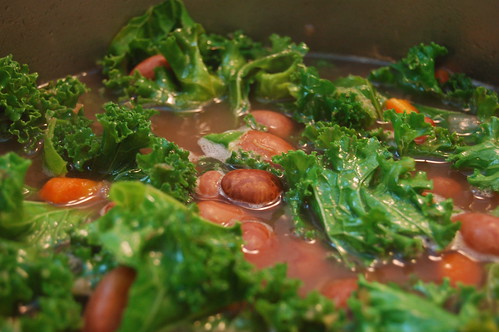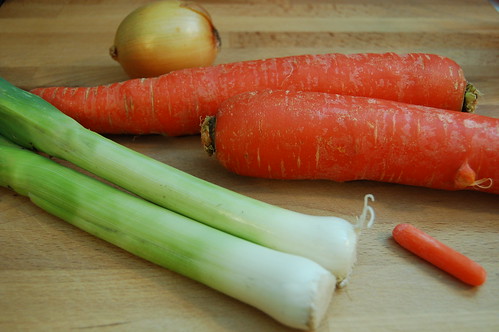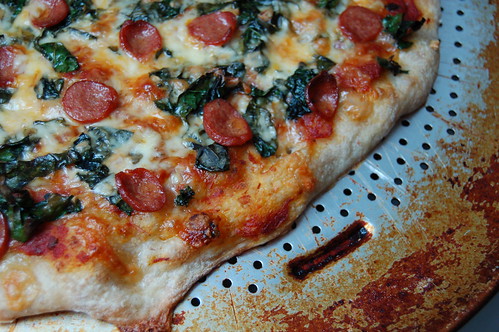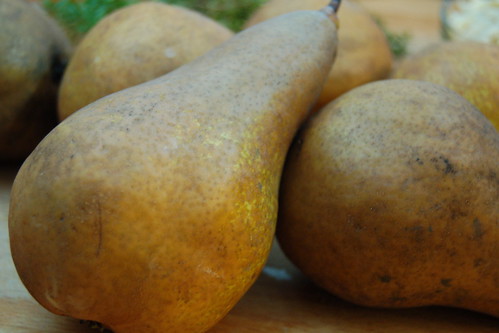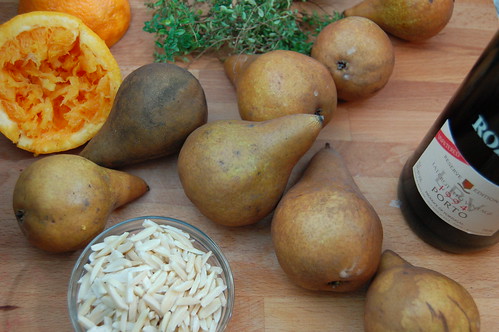Oh, hi there. I haven't forgotten you exist, blog friends. Really. AND I've been cooking! Look, soup!
And monster-enormo-giant carrots! (baby carrot and onion for scale)
And beautiful Borlotti beans!
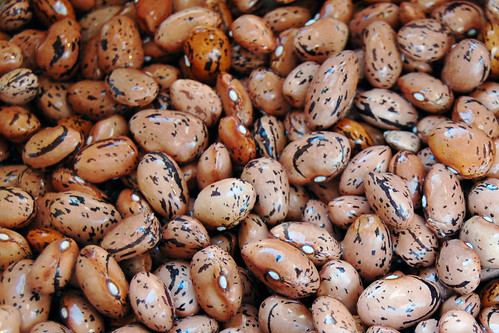
In addition to actual cooking, I've been doing a TON of baking. My contribution to the Thanksgiving table consists of dill bread (my family would revolt if I show up without this for any holiday), parker house rolls, multigrain bread, compound butter, jam from my canning extravaganza (well, ok, that won't be ON the Thanksgiving table), and the turkey. Yep. My employer gives us a turkey from Bob's Turkey Farm every year on the Wednesday before The Big Day... and he's in a cooler in the hallway now, waiting for the trip up to Maine, which we'll be taking in a couple of hours. I'll be back on Sunday with Sweet Potato Latkes for Gourmet Unbound. Until then, I'll leave you with this awesome soup I learned about from The Wednesday Chef.
Cranberry Bean, Lacinato Kale and Pasta Soup
Makes 8 to 10 servings, seriously. This is a lot of soup. I sometimes halve the recipe. I soaked my beans for the eight hours I was at work, plus Rancho Gordo beans are super fresh, so my cooking time for the beans was a little shorter than what's noted here.
1/4 cup olive oil plus 2 1/2 tablespoons, divided
2 leeks, white part only, cleaned and sliced, about 2 cups
2 medium carrots, finely chopped, about 1 cup
1 onion, finely chopped, about 1 cup
3 cups dried cranberry beans (I used Rancho Gordo Borlotti beans)
Kosher salt
2 bunches lacinato kale (or one and a half bunches curly kale), cleaned, stemmed and coarsely chopped, about 10 cups
3 cups dried orecchiette pasta (about 9 ounces)
1 tablespoon fresh minced sage
1/2 cup fresh chopped parsley
1 1/2 tablespoons smoked paprika
1 1/2 teaspoons Hungarian paprika
1/8 teaspoon fresh lemon juice
Grated Parmesan cheese, for garnish
1. In a 4-quart soup pot or cast iron casserole, heat 1/4 cup of olive oil and cook the leeks, carrots and onions over medium-low heat until just softened, 8 to 10 minutes.
2. Add the dried beans and 12 cups of water. Bring to a simmer over high heat, then reduce the heat to low and cover the pot with the lid, stirring occasionally. After about 45 minutes, add 1 tablespoon of kosher salt. Continue to cook, covered, and again stirring occasionally, just until the beans are soft, 45 minutes to 1 hour or more (my beans only needed another half hour or so).
3. With a slotted spoon, remove 1 cup of the beans and, separately, 2 tablespoons of bean liquor and set both aside. Add the kale to the soup, stirring in a few cups at a time as the greens wilt. Cover, and continue to cook for 8 to 10 minutes more until the greens are tender, then remove from the heat.
4. Meanwhile, bring a pot of salted water to a rolling boil and cook the pasta until al dente; drain and reserve.
5. Combine in a food processor or blender: reserved beans and bean liquor, sage, parsley, paprikas and lemon juice, 2 1/2 tablespoons olive oil and a pinch of salt. Blend until smooth. Give it a taste, it may need salt or more liquid from the soup for ease of blending.
6. Right before you're ready to serve it, stir the cooked pasta into the soup. Ladle the soup into bowls and top each with 2 tablespoons of spiced bean purée (feel free to be generous, this stuff really makes the soup). Grate Parmesan over the top of each bowl to taste and serve immediately.
.jpg)
